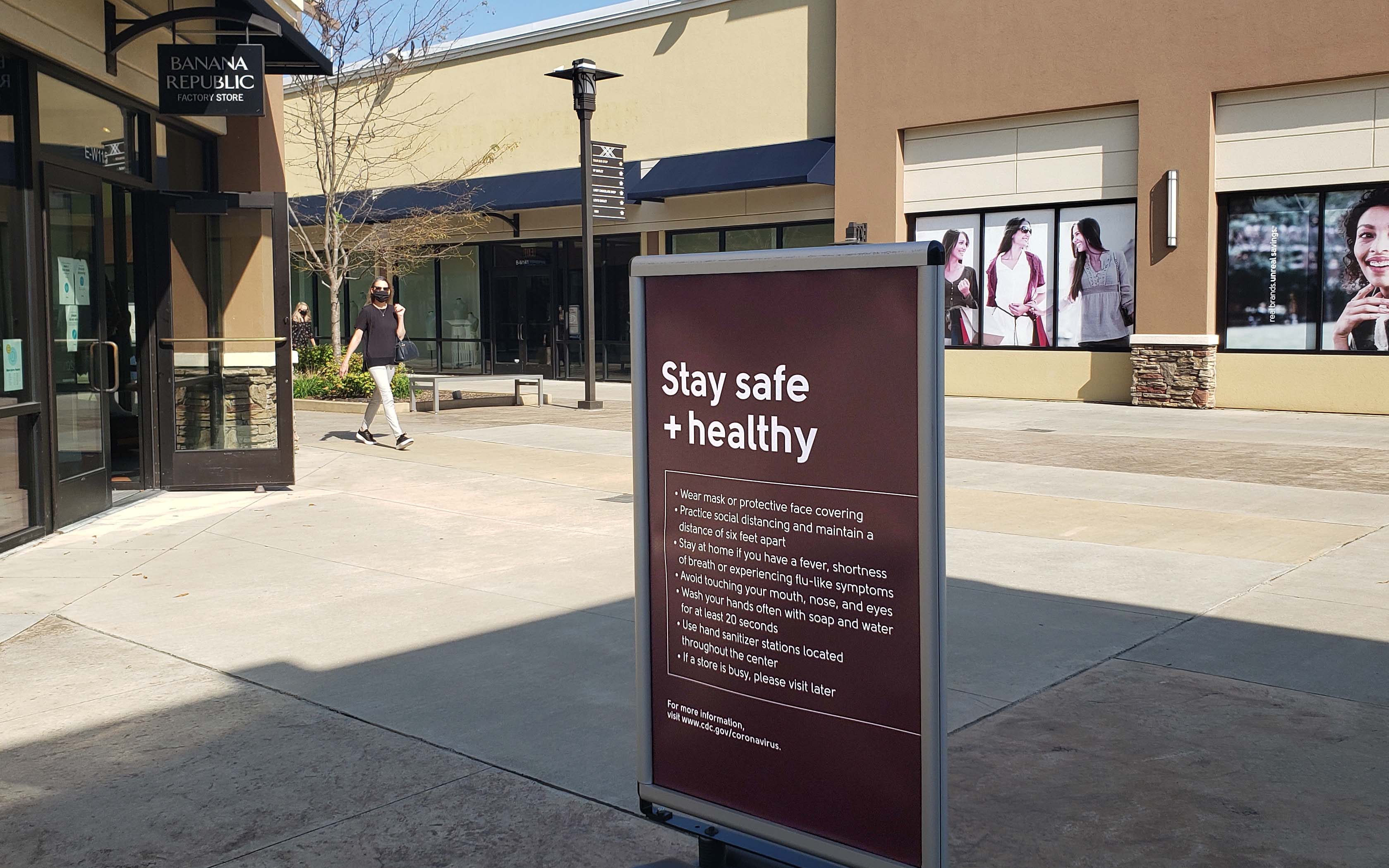Consumer confidence growing as U.S. economy heads into fourth quarter, 2021
October 26 - November 1, 2020
By Daily Record Staff
Consumer and business sentiments in Arkansas and the rest of the nation is improving with three months left in 2020, but economists agree there is still that most Americans are still nervous about the future.
The Conference Board’s highly watched Consumer Confidence Index increased sharply in September from 85.8 to 98.5. The Index now stands at 101.8, up from 86.3 in August. The Present Situation Index – based on consumers’ assessment of current business and labor market conditions –The Expectations Index – based on consumers’ short-term outlook for income, business, and labor market conditions – increased from 86.6 in August to 104.0 this month.
The nonpartisan Conference Board conducts the monthly consumer barometer with Nielsen Corp., the global data analytics and survey firm. The latest results were based on preliminary data on what consumers buy and watch through the cutoff date of Sept. 18.
“Consumer Confidence increased sharply in September, after back-to-back monthly declines, but remains below pre-pandemic levels,” said Lynn Franco, senior director of economic Indicators at The Conference Board. “A more favorable view of current business and labor market conditions, coupled with renewed optimism about the short-term outlook, helped spur this month’s rebound in confidence. Consumers also expressed greater optimism about their short-term financial prospects, which may help keep spending from slowing further in the months ahead.”
Consumers’ appraisal of current conditions rebounded in September. The percentage of consumers claiming business conditions are “good” increased from 16% to 18.3%, while those claiming business conditions are “bad” decreased from 43.3% to 37.4%. Consumers’ assessment of the labor market also improved. The percentage of consumers saying jobs are “plentiful” increased from 21.4% to 22.9%, while those claiming jobs are “hard to get” decreased from 23.6%t to 20%.
Consumers were also more optimistic about the short-term outlook. The percentage of consumers expecting business conditions will improve over the next six months increased from 29.8% to 37.1%, while those expecting business conditions will worsen fell from 20.7% to 15.8%.
Consumers were more positive about the outlook for the labor market. The proportion expecting more jobs in the months ahead rose from 29.9% to 33.1%, while those anticipating fewer jobs decreased from 21.2% to 15.6%. Regarding their short-term income prospects, the percentage of consumers expecting an increase improved from 13% to 17.5%, while the proportion expecting a decrease fell from 16% to 12.6%.
Similarly, the Federal Reserve Bank of New York’s Center for Microeconomic Data released the September 2020 Survey of Consumer Expectations on Oct. 13, which shows improvements in labor market and spending expectations, as well as less pessimistic views about households expected financial situation.
Home price growth expectations returned to their pre-COVID-19 levels, and debt delinquency expectations remained low. In contrast, year-ahead household income expectations remain weak compared to the pre-COVID-19 period. Median inflation expectations remained unchanged at the short-term horizon, while it declined at the medium-term horizon. Uncertainty and disagreement about future inflation remain elevated.
Some of the key highlights include:
• Median inflation expectations in September remained unchanged at 3.0% at the one-year horizon and decreased 0.3 percentage point returning to its July level of 2.7% at the three-year horizon. The decline was driven by respondents above the age of 40 and those with at least some college education.
• Median inflation uncertainty – or the uncertainty expressed regarding future inflation outcomes – increased for the third consecutive month at the three-year horizon, while it retreated to its July 2020 level at the one-year horizon. Both series remain elevated relative to their pre-COVID-19 readings.
• Median home price change expectations continued its upward trend after reaching a series’ low of 0% in April 2020 and increasing from 2.8% in August to 3.1% in September, just above its 2019 average of 3.0%. The increase was broad-based across demographic groups and was strongest for respondents who live in the South Census region.
• The median one-year ahead expected change in the cost of a college education remained essentially unchanged, while median expectations for the price of gasoline and for food prices both declined by 0.8 and 0.3 percentage points to 4.8% and 5.1%, respectively. Median expectations for the cost of rent and medical care also decreased from 5.5% and 8.3% to 5.4% and 6.8% in September, respectively.
• Mean unemployment expectations – or the mean probability that the U.S. unemployment rate will be higher one year from now – decreased from 39.1% in August, to 36.4% in September, below its 2019 average of 36.9%. The decline was driven by respondents below the age of 60.
• The mean perceived probability of losing one’s job in the next 12 months retreated from 18.0% in August to 16.6% in September, remaining well above its pre-COVID-19 reading of 13.8% in February. This month’s decline was more pronounced among respondents above age 60 and those with a household income below $50,000. The mean probability of leaving one’s job voluntarily in the next 12 months increased 0.6 percentage point to 20.3% in September. The increase was broad-based across demographic groups.
Median expected household income growth increased by 0.1 percentage point to 2.3% in September, remaining well below its 2019 average of 2.8%. The increase was driven mostly by respondents below the age of 40 and those with at least some college education.
Perceptions about households’ current financial situations compared to a year ago deteriorated slightly, with slightly more respondents reporting being worse off. In contrast, one-year ahead expectations about households’ financial situations improved with more respondents expecting their financial situation to improve and fewer respondents expecting their financial situation to worsen.
The mean perceived probability that U.S. stock prices will be higher 12 months from now decreased 0.8 percentage points to 44.1% in September.
Business sentiment rising too
In the business sector, Creighton University’s Mid-America Business Conditions Index rose for the fourth straight month and advanced above growth neutral and to its highest level since May 2018. The regional economic barometer, which ranges between 0 and 100, increased to 65.1 from August’s 60.0. In April, COVID-19 pushed the overall index to its lowest level in 11years. Since April, the overall index has risen five consecutive months with four straight months above growth neutral 50.0.
The Creighton Economic Forecasting Group has conducted the monthly survey of supply managers in nine states since 1994 to produce leading economic indicators of the Mid-America economy. States included in the survey are Arkansas, Iowa, Kansas, Minnesota, Missouri, Nebraska, North Dakota, Oklahoma and South Dakota.
The September score for Arkansas increased slightly to 48.3 from August’s 48.2 but remained below growth neutral. Components of the index were new orders at 44.2, production or sales at 49.6, delivery lead time at 56.5, inventories at 47.1, and employment at 44.3.
The September Business Conditions Index for Arkansas rose to 68.5 from August’s 63.0. Components from the September survey of supply managers were new orders at 78.8, production or sales at 48.9, delivery lead time at 77.0, inventories at 53.9, and employment at 63.9.
“Validating a rapidly improving state economy, U.S. Department of Labor data indicate that the state’s insured unemployment rate stood a 0.9% in the second week of March, peaked at 11.7% in the third week of May, and fell to 3.3% in the first week of September,” said economist Ernie Goss, director of Creighton University’s Economic Forecasting Group in Omaha, Neb.
In addition, the regional economic index shows that economic optimism as captured by the September Business Confidence Index, which looks six months ahead, dipped to 69.4 from 73.3 in August. Although down slightly, Goss said the September reading shows business owners and executives are optimist that the economy is improving.
“An expanding manufacturing sector, the federal stimulus plan, the Federal Reserve monetary incentive programs, and U.S. stock markets supported September’s very healthy confidence index,” said Goss.
As noted by Goss, Federal Reserve Chairman Jerome Powell recently Economic testified in congressional hearings that economic activity has picked up from its depressed second-quarter level, when much of the economy was shut down to stem the spread of the virus.
Powell, in Sept. 22 testimony before the U.S. House Committee on Financial Services that includes Congressman French Hill, R-Little Rock, told lawmakers that many economic indicators show marked improvement, but stressed that the road ahead is still unsure.
“Household spending looks to have recovered about three-fourths of its earlier decline, likely owing in part to federal stimulus payments and expanded unemployment benefits. The housing sector has rebounded, and business fixed investment shows signs of improvement,” said Powell. “In the labor market, roughly half of the 22 million payroll jobs that were lost in March and April have been regained as people return to work. Both employment and overall economic activity, however, remain well below their pre-pandemic levels, and the path ahead continues to be highly uncertain.”
Powell also noted that the economic downturn has not fallen equally on all Americans, stressing that those least able to bear the burden have been the most affected. He said the rise in joblessness has been especially severe for lower-wage workers, for women, and for African Americans and Hispanics.
“A full recovery is likely to come only when people are confident that it is safe to reengage in a broad range of activities,” said the Federal Reserve chief. “The path forward will depend on keeping the virus under control, and on policy actions taken at all levels of government.”
PHOTO CAPTIONS: (Photo by Daily Record Staff)
Consumers are more positive about the outlook for the labor market as they are expecting more jobs to arise in the months ahead.




